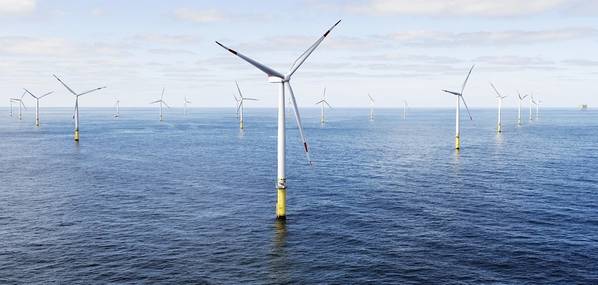
NOAA and offshore wind development company Ørsted have signed a memorandum of agreement (MOA) to share physical and biological data in Ørsted-leased waters subject to U.S. jurisdiction.
NOAA, said the MOA is the first of its kind with an offshore wind developer and that it anticipates Ørsted’s data will fill gaps in ocean science areas, particularly in ocean mapping and observing, to help meet NOAA missions related to climate adaptation and mitigation, weather-readiness, healthy oceans, and resilient coastal communities and economies.
“This partnership with industry will deliver data Americans use for business, science, and education, while at the same time mitigating effects of climate change,” said Ben Friedman, NOAA's acting administrator. “Our ocean, coastal, and Great Lakes resources are critical to national security and well-being, and NOAA is pleased to work with willing partners to understand and maximize the potential of these national assets.”
“Ørsted believes in making a concerted effort to work with all stakeholders to grow key learnings and work from a complete data set to better protect our planet,” said David Hardy, CEO Ørsted Offshore North America. “Climate change is a reality, and we are proud to work with NOAA to provide crucial information and to demonstrate how our industry can be stewards of our oceans while providing American individuals and businesses with clean, renewable energy.”
Offshore wind energy is poised to provide significant environmental and economic benefits for the U.S. The nation’s needs for secure and sustainable energy require quality data and science to better understand and predict the ecological, economic and societal consequences of particular energy choices, as well as the effectiveness of strategies for minimizing environmental impacts and maximizing energy efficiency, particularly in waters subject to U.S. jurisdiction.
As part of the agreement, NOAA will share its publicly available data with Ørsted. Together, these data and information resources will be used to plan and ensure the effective deployment, sustainable operation and maintenance, and efficient use of weather-dependent and oceanic renewable energy technologies and infrastructure.
NOAA said the MOA could potentially pave the way for similar data-sharing agreements with other developers.
In addition to direct data share, Ørsted said it will identify further opportunities with NOAA’s Technology Partnership Office to foster preeminent science and technological innovation that can support NOAA and the Department of Commerce’s goals to stimulate sustainable growth in the U.S. blue economy. The MOA will run through September 30, 2025.


